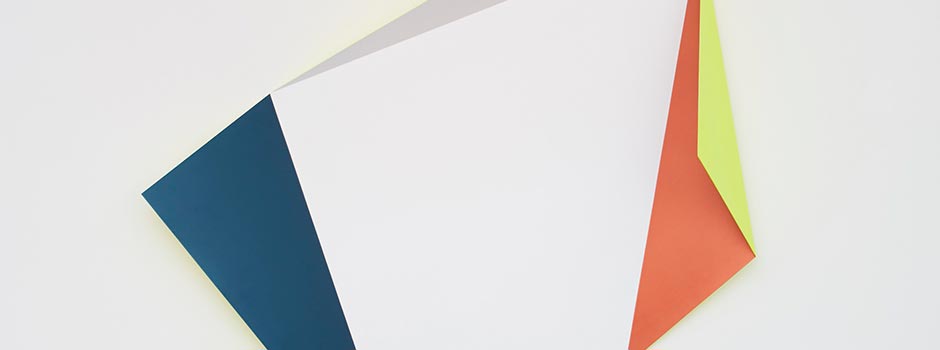
Summer Exhibition at The Third Line (May 15 - July 30, 2019) I Will See It, When I Believe It
May 11, 2019 INSPO, Exhibition

The whole is greater than the sum of its parts. Or is it? Gestalt psychology suggests that in a split second our brain amalgamates the parts of an object or form, and sees a whole. In other words, it turns perception into knowledge. But what happens when the artist disrupts that split second and the transition from perceiving to knowing is stalled? The artists presented have all used the liminal state of perception as a means of questioning what is in fact, known. Each work selected possesses a form of dissonance between the expected and the real, enabling a dialogue between artwork and viewer born out of confusion and failure to see a whole at once.
Abbas Akhavan’s seemingly straightforward Untitled concrete blocks dissimulate elements of the artist’s long-time preoccupation with the environment, animals, weapons, and property.
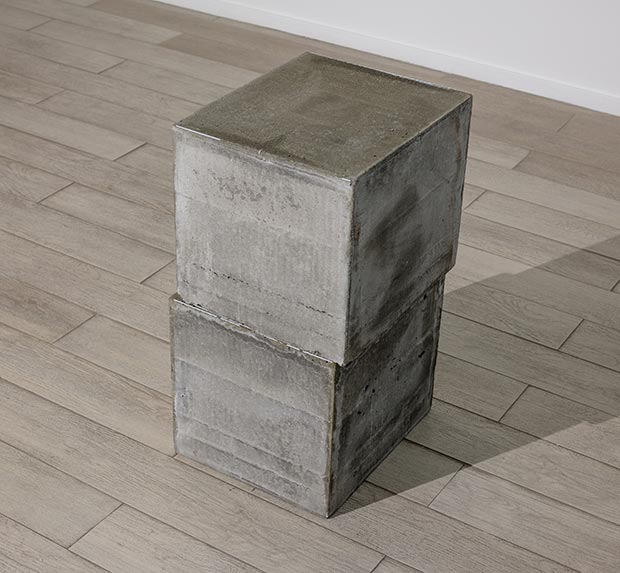 Abbas Akhavan, Untitled, 2018, Concrete, bird cage 34 x 30 x 33 cm each / Courtesy of The Third Line and the artist
Abbas Akhavan, Untitled, 2018, Concrete, bird cage 34 x 30 x 33 cm each / Courtesy of The Third Line and the artist
In his monochromatic First Snow series, Farhad Moshiri uses his signature technique of hand embroidering beads to illustrate photos he’s taken of a heavily snowed-in landscape outside of his studio. While the work appears as abstract and heavily pixilated when taken in from close up, the pixels come together to form an obvious scene as one takes a step back.
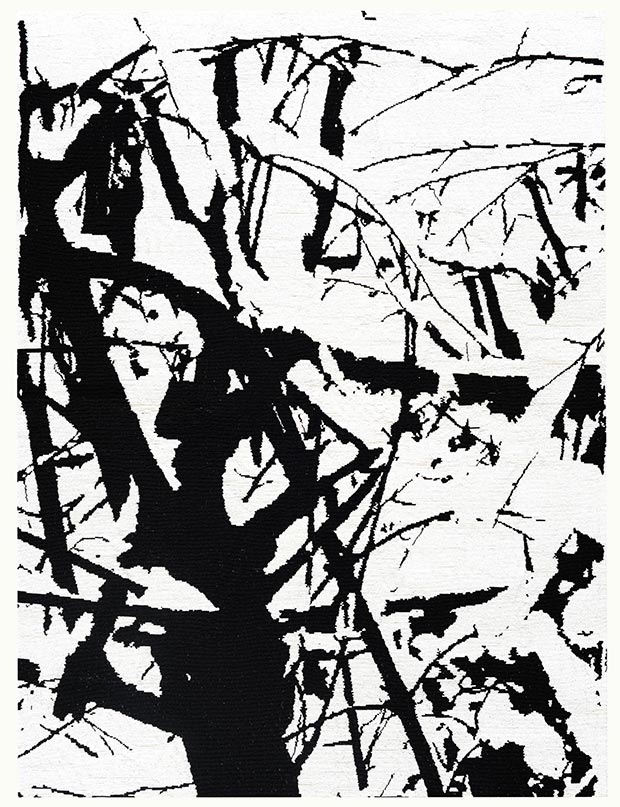 Farhad Moshiri, 2018. First Snow 3D, Hand embroidered beads on canvas on board, 143 x 107cm / Courtesy of The Third Line and the artist
Farhad Moshiri, 2018. First Snow 3D, Hand embroidered beads on canvas on board, 143 x 107cm / Courtesy of The Third Line and the artist
The female figures depicted in Hayv Kahraman’s Search: Ask One Prisoner to Come Close to Translate for Others stands in stark contrast with the work’s subject matter — the sonic violence connected to Hayv’s past as an Iraqi immigrant. The deliberately punctured canvas enacts mind and body scarifications resulting from such trauma.
Rana Begum’s steel Fold works are developed out of previous studies in paper and delicately emulate the weightlessness of the original material. Careful consideration is given to the folds and angles while colors are scrupulously applied to various facets to create crystalline compositions.
“What I hope to create with my work is movement, an experience of walking through the city, of seeing the random. The initial illusion you see in the work then becomes a reality as you move around the space and experience the work as a whole,†said Rana of her works.
 Rana Begum, No. 806 L Fold, 2018. Paint on stainless steel, 135 x 124 x 36 cm / Courtesy of The Third Line and the artist
Rana Begum, No. 806 L Fold, 2018. Paint on stainless steel, 135 x 124 x 36 cm / Courtesy of The Third Line and the artist
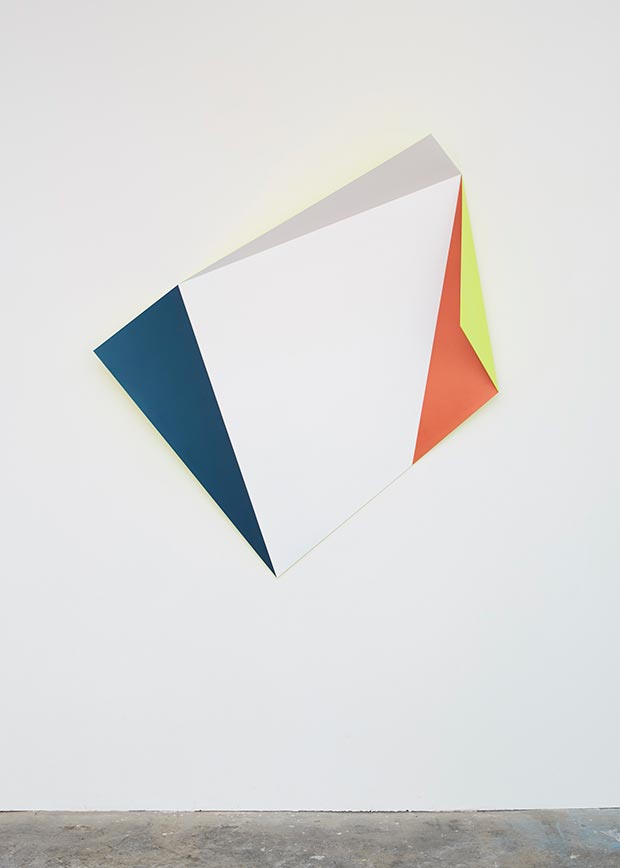 Rana Begum, No. 806 L Fold, 2018. Paint on stainless steel, 135 x 124 x 36 cm / Courtesy of The Third Line and the artist
Rana Begum, No. 806 L Fold, 2018. Paint on stainless steel, 135 x 124 x 36 cm / Courtesy of The Third Line and the artist
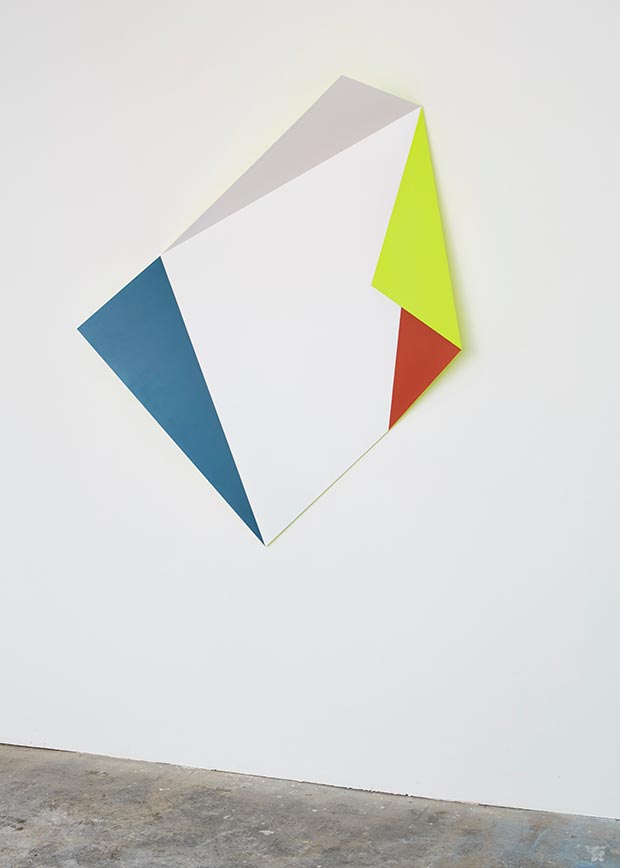 Rana Begum, No. 806 L Fold, 2018. Paint on stainless steel, 135 x 124 x 36 cm / Courtesy of The Third Line and the artist
Rana Begum, No. 806 L Fold, 2018. Paint on stainless steel, 135 x 124 x 36 cm / Courtesy of The Third Line and the artist
Part of Slavs and Tatars’ cycle Friendship of Nations, the banner Long Live Long Live focuses on the unlikely shared heritage between Poland and Iran. Creolizing best-practices from the Solidarność movement and the Iranian Revolution of 1979. Transliterated in Farsi script, Long Live Long Live attests to the collective’s research on language as a socio-political tool for disruption, humor, and unexpected meaning.
Using her signature mono-typing technique, Laleh Khorramian’s Landscape Scroll unveils microbial lands through which she explores the human condition, transformation and a sense of unknown. Laleh harnesses the possibilities of chance, accidents and manipulation in her art making, lending the work’s abstract nature to endless interpretations.
 Left: Slavs and Tatars, Long Live Long Live, 2011. Embroidery, synthetic velvet, cotton, ca. 200 × 120 cm / Right: Laleh Khorramian, Landscape scroll 3, 2016, monotype and mixed media on polypropylene, 132 x 51 cm / Courtesy of The Third Line and the artist
Left: Slavs and Tatars, Long Live Long Live, 2011. Embroidery, synthetic velvet, cotton, ca. 200 × 120 cm / Right: Laleh Khorramian, Landscape scroll 3, 2016, monotype and mixed media on polypropylene, 132 x 51 cm / Courtesy of The Third Line and the artist
Sophia Al Maria’s EVERYTHING MUST GO digital collages create hybrid phrases lifted from political playbooks and cosmetic adjectives. A critical parody of consumerist culture, the seemingly disconnected military and cosmetic worlds make for disturbing yet eloquent slogans.
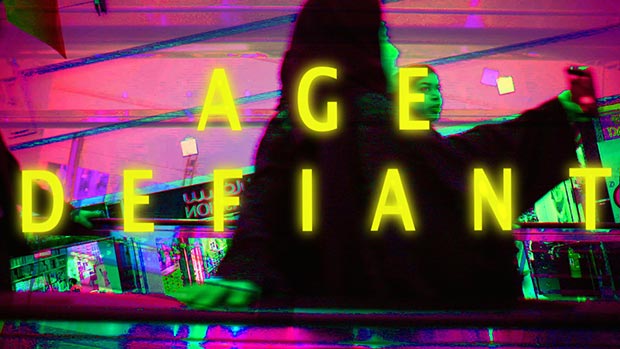 Sophia Al Maria, Age Defiant, 2017. Digital print, 24 x 42 cm / / Courtesy of The Third Line and the artist
Sophia Al Maria, Age Defiant, 2017. Digital print, 24 x 42 cm / / Courtesy of The Third Line and the artist
The Third Line is a Dubai-based art gallery that represents contemporary Middle Eastern artists locally, regionally and internationally. The Third Line also hosts non-profit, alternative programs to increase interest and dialogue in the region. Represented artists include: Abbas Akhavan, Ala Ebtekar, Amir H. Fallah, Babak Golkar, Farah Al Qasimi, Farhad Moshiri, Fouad Elkoury, Hassan Hajjaj, Hayv Kahraman, Huda Lutfi, Joana Hadjithomas & Khalil Joreige, Laleh Khorramian, Lamya Gargash, Monir Shahroudy Farmanfarmaian, Pouran Jinchi, Rana Begum, Sahand Hesamiyan, Sara Naim, Sherin Guirguis, Shirin Aliabadi, Slavs and Tatars, Sophia Al-Maria, Tarek Al-Ghoussein, Youssef Nabil and Zineb Sedira.
Comments
Add a comment